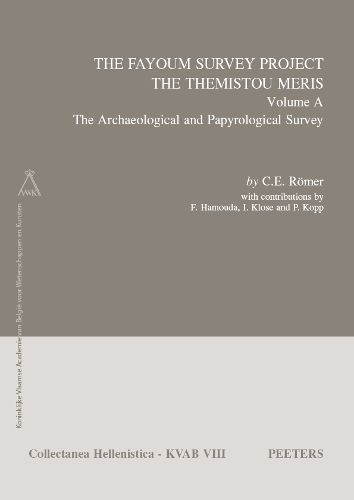Readings Newsletter
Become a Readings Member to make your shopping experience even easier.
Sign in or sign up for free!
You’re not far away from qualifying for FREE standard shipping within Australia
You’ve qualified for FREE standard shipping within Australia
The cart is loading…






The Themistou Meris was the north-western administrative district of the
Oasis Fayoum in the Graeco-Roman Period, home of Greek speaking settlers
and indigenous Egyptians, who lived side by side in villages, many of
them newly founded by the first Ptolemaic Kings in the 3rd century BC.
The book is the result of an archaeological survey, and small
excavations carried out between 2000 and 2016 in that part of the
Fayoum; it offers descriptions of archaeological remains, many of them
now under threat from land reclamation, gives information about the
history and exact location of single sites, and values the excavations,
which were undertaken there in the beginning of the 20th century, often
with the sole aim of finding papyri, while archaeological features were
neglected. The book seeks to combine the written and the archaeological
evidence, offering new proposals for identifying ancient names with
ancient sites, and gives a panorama of the multicultural society of the
ancient Fayoum.
$9.00 standard shipping within Australia
FREE standard shipping within Australia for orders over $100.00
Express & International shipping calculated at checkout
The Themistou Meris was the north-western administrative district of the
Oasis Fayoum in the Graeco-Roman Period, home of Greek speaking settlers
and indigenous Egyptians, who lived side by side in villages, many of
them newly founded by the first Ptolemaic Kings in the 3rd century BC.
The book is the result of an archaeological survey, and small
excavations carried out between 2000 and 2016 in that part of the
Fayoum; it offers descriptions of archaeological remains, many of them
now under threat from land reclamation, gives information about the
history and exact location of single sites, and values the excavations,
which were undertaken there in the beginning of the 20th century, often
with the sole aim of finding papyri, while archaeological features were
neglected. The book seeks to combine the written and the archaeological
evidence, offering new proposals for identifying ancient names with
ancient sites, and gives a panorama of the multicultural society of the
ancient Fayoum.